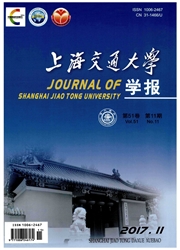

 中文摘要:
中文摘要:
在频域快速场模型的基础上进行逆傅里叶变换,得到海底地震波的时域合成波形计算方法,并对不同浅海环境参数下的合成波形进行了计算.结果表明:海底地震波的波动成分为海底表面波和简正波;当声源频率低于简正波最小截止频率时,不存在无衰减传播的简正波,其波动成分主要为海底表面波;随着声源频率增大,各阶简正泼逐渐被激发且逐渐增强;声源深度越接近于海底,越有利于海底地震波的激发,波动成分中表面波越发占据主要地位;与硬质海底相比,软质海底更有利于低频声源激发海底地震波,但不利于较高频率声源海底地震波的激发.
 英文摘要:
英文摘要:
Numerical calculations of range-stacked synthetic seismograms at seafloor caused by low frequen cy sound source at different shallow sea environments were conducted in this paper with the combination of the FFP model with inverse Fourier transform. According to the calculated results of numerical examples, the time series of seismic wave at seafloor are mostly composed of interface waves and normal mode waves. The time series of seismic wave is dominated by interface wave if the source frequency is less than the mini- mal cut off frequency of normal modes. More and more normal modes appear when the source frequency increases and gradually passes their cut-off frequency respectively. The normal modes gradually become the significant carriers of source energy and surface wave weakens accordingly. The more closely the sound source approaches to the seafloor, the more efficiently the seismic wave is excited, and the interface wave prevails in the synthetic seismograms simultaneously. When the source frequency is very low, the seismic wave is more strongly generated in soft seabeds than in hard seabeds, but more weakly when the source frequency is relatively higher.
 同期刊论文项目
同期刊论文项目
 同项目期刊论文
同项目期刊论文
 Numerical calculation of synthetic seismograms at seafloor caused by low frequency point sound sourc
Numerical calculation of synthetic seismograms at seafloor caused by low frequency point sound sourc Numerical Calculation of Seafloor Synthetic Seismograms Caused by Low Frequency Point Sound Source (
Numerical Calculation of Seafloor Synthetic Seismograms Caused by Low Frequency Point Sound Source ( Nonlinear effects on hydrodynamic pressure field caused by ship moving at supercritical speed in sha
Nonlinear effects on hydrodynamic pressure field caused by ship moving at supercritical speed in sha 期刊信息
期刊信息
